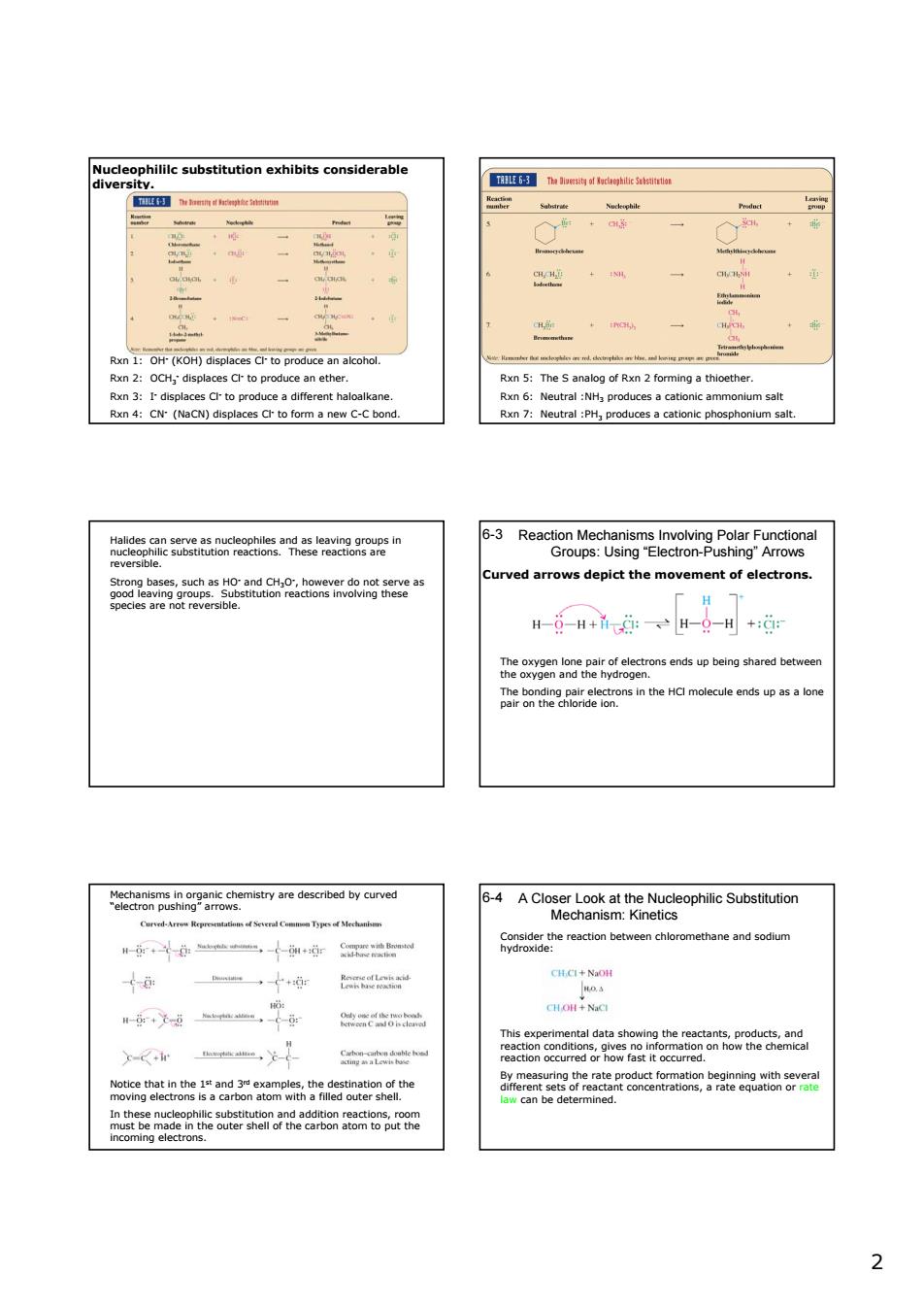正在加载图片...

Nuceophililc substitution exhibits considerable xn(KH)displaces crto produce c Rxn 2:OCH,'displaces C to produce an ether. Rxn5:thioether. hteds5aebeotac2tona5a392eRsh urved arrows depict the movement of electrons H H-6-H+i-:、H-0-H+:0 heoe9enheae.arotee eaaie2cewneeHamoecenspsalbene B4ACeiboklteneeophicSutstion Ck 2 2 Nucleophililc substitution exhibits considerable diversity. Rxn 1: OH- (KOH) displaces Cl- to produce an alcohol. Rxn 2: OCH3 - displaces Cl- to produce an ether. Rxn 3: I- displaces Cl- to produce a different haloalkane. Rxn 4: CN- (NaCN) displaces Cl- to form a new C-C bond. Rxn 5: The S analog of Rxn 2 forming a thioether. Rxn 6: Neutral :NH3 produces a cationic ammonium salt Rxn 7: Neutral :PH3 produces a cationic phosphonium salt. Halides can serve as nucleophiles and as leaving groups in nucleophilic substitution reactions. These reactions are reversible. Strong bases, such as HO- and CH3O- , however do not serve as good leaving groups. Substitution reactions involving these species are not reversible. Reaction Mechanisms Involving Polar Functional Groups: Using “Electron-Pushing” Arrows 6-3 Curved arrows depict the movement of electrons. The oxygen lone pair of electrons ends up being shared between the oxygen and the hydrogen. The bonding pair electrons in the HCl molecule ends up as a lone pair on the chloride ion. Mechanisms in organic chemistry are described by curved “electron pushing” arrows. Notice that in the 1st and 3rd examples, the destination of the moving electrons is a carbon atom with a filled outer shell. In these nucleophilic substitution and addition reactions, room must be made in the outer shell of the carbon atom to put the incoming electrons. A Closer Look at the Nucleophilic Substitution Mechanism: Kinetics 6-4 Consider the reaction between chloromethane and sodium hydroxide: This experimental data showing the reactants, products, and reaction conditions, gives no information on how the chemical reaction occurred or how fast it occurred. By measuring the rate product formation beginning with several different sets of reactant concentrations, a rate equation or rate law can be determined